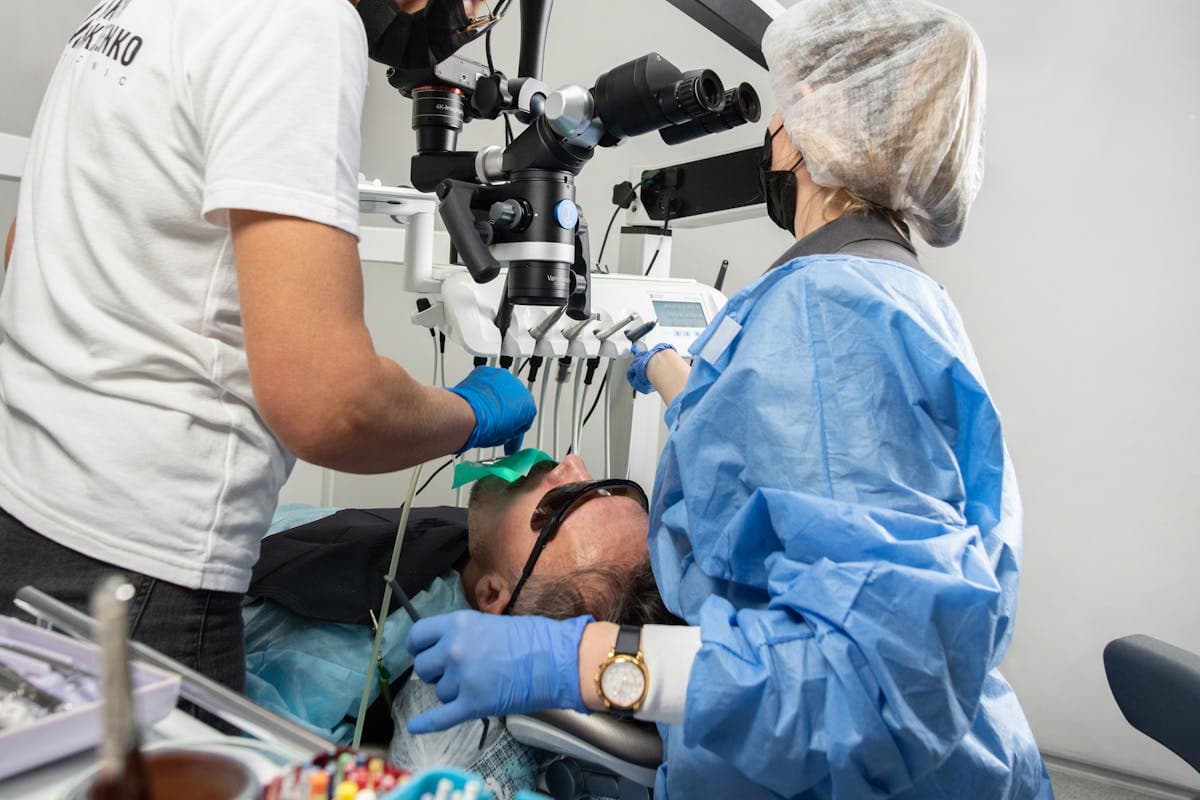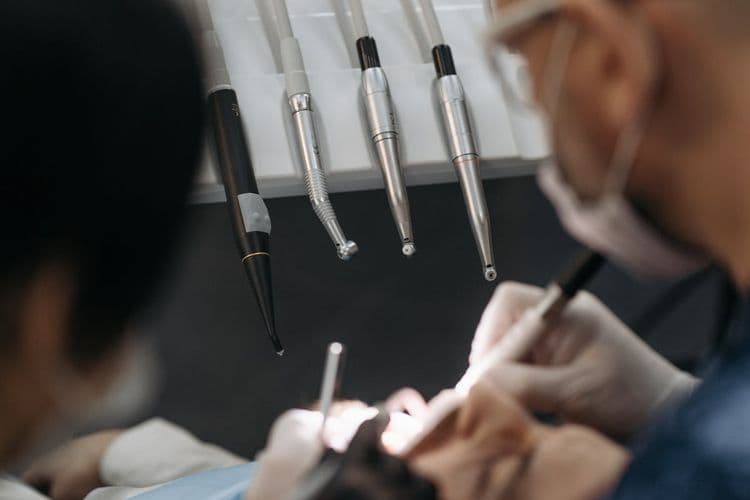In the domain of dentistry, sedative fillings serve as an essential tool for managing tooth decay and alleviating patient discomfort. These medicated fillings, composed mainly of eugenol, offer temporary relief while awaiting more permanent dental solutions. Yet, despite their significance, many people remain unfamiliar with their function and benefits. Let us, consequently, investigate further the role of sedative fillings, the conditions necessitating their use, their potential risks, and how they compare to conventional fillings. This conversation will inevitably enhance our understanding of this vital dental intervention.
Understanding Sedative Fillings
While it may seem complex at first glance, understanding sedative fillings is essential for anyone seeking restorative dental care. These fillings are a temporary solution used to relieve pain and discomfort in the dental pulp. The sedative effects come from the eugenol, a natural substance found in clove oil, which is a primary ingredient in these types of fillings. This substance has both anti-inflammatory and anesthetic properties, making it perfect for calming an irritated tooth. Additionally, sedative fillings can be an excellent tool for managing dental anxiety. The soothing properties of the filling can reduce the stress and fear associated with dental procedures, providing patients with a more comfortable experience. Understanding these benefits can help patients make informed decisions about their dental health.
Importance of Sedative Fillings
Given their unique therapeutic properties, sedative fillings play an essential role in the field of dentistry. They are primarily utilized to manage dental sensitivity and pain, commonly arising from deep cavities or trauma. The sedative filling benefits are manifold, promoting tooth preservation and enhancing patient comfort during the healing process. These fillings contain medication that soothes the pulp tissue, alleviating discomfort while the tooth recovers or awaits further treatment. They also act as temporary restorations, protecting the tooth from bacteria and further decay. The importance of sedative fillings, consequently, lies in their capacity to provide immediate relief, safeguard oral health, and improve patient experience in dental care, making them an invaluable tool for dentists.
The Procedure: Applying Sedative Fillings
To fully comprehend the intricacies of sedative fillings, one must be familiar with the entire procedure, starting from application to aftercare. The process of applying sedative fillings is not overly complex but requires a professional touch to guarantee efficacy. Additionally, the aftercare practices are equally significant in maintaining the longevity and effectiveness of these fillings.
Understanding Sedative Fillings
Sedative fillings, a term often encountered in dental care, play a significant role in managing dental discomfort and preserving the integrity of teeth suffering from decay or injury. These fillings are composed of sedative materials such as zinc oxide and eugenol which have a soothing effect on the tooth pulp. Their unique characteristic lies in their ability to calm the tooth while protecting it from further damage. Additionally, sedative fillings are a viable option for patients suffering from dental anxiety, as they can provide immediate relief from pain and discomfort. These fillings are not a permanent solution but serve as a temporary measure until a permanent restoration procedure can take place. Understanding the role and benefits of sedative fillings can help patients make informed decisions about their dental care.
Sedative Fillings Procedure
Having explored the nature and benefits of sedative fillings, we can now move towards understanding the procedure involved in their application. The process begins with the dentist thoroughly cleaning the affected area. Following this, sedative materials, composed of soothing compounds, are carefully applied to the tooth. This not only aids in alleviating pain but also promotes healing. The primary objective of this procedure is patient comfort; the sedative filling acts as a temporary measure to diminish discomfort until a more permanent solution can be implemented. It’s a non-invasive procedure, generally completed within a single dental visit. The dentist’s expertise guarantees the accurate placement of the filling, contributing to its effectiveness in providing relief.
Aftercare for Sedative Fillings
Once the procedure of applying sedative fillings is completed, it is imperative to follow a proper aftercare routine to guarantee their effectiveness and promote oral health. Initially, pain management is a significant aspect to take into account. Over-the-counter pain relievers are often recommended by dentists to manage discomfort after the procedure. Also, avoid eating hard or chewy food until the numbness in your mouth wears off to prevent biting your cheeks or tongue. Regular brushing and flossing should continue, but be gentle around the filled area. Follow-up appointments are essential to monitor the healing process and assess the success of the filling. During these visits, your dentist can make necessary adjustments to ensure ideal functionality.

Dental Conditions Requiring Sedative Fillings
A myriad of dental conditions necessitate the use of sedative fillings. One such condition is dental anxiety, which can cause significant discomfort and stress during dental procedures. Sedative fillings can alleviate this anxiety by creating a calming effect during treatment. Additionally, tooth sensitivity, which is often a result of exposed dentin or damaged tooth enamel, may also require the use of sedative fillings. These fillings work to soothe sensitive teeth by reducing the transmission of sensations from the tooth surface to the nerve. Severe dental decay, pulpitis (inflammation of the dental pulp), and recent dental surgeries are other conditions that may necessitate the use of sedative fillings for effective pain management and treatment.
Benefits of Sedative Fillings
While there are numerous advantages associated with the use of sedative fillings, their primary benefit lies in their ability to provide immediate relief from dental discomfort. These fillings are often used in cases where patients experience high levels of dental anxiety or sensitivity.
- Pain Management: Sedative fillings are designed to manage and control dental pain, offering immediate relief during and after the procedure.
- Anxiety Relief: The sedative nature of these fillings helps alleviate dental anxiety, providing a stress-free experience.
- Preserves Tooth Structure: Sedative fillings require less tooth removal, aiding in the preservation of natural tooth structure.
- Ease of Application: The procedure for applying sedative fillings is simple, thereby reducing the duration of the dental appointment.
Potential Risks and Complications
Despite the numerous benefits associated with sedative fillings, it is essential to be aware of potential risks and complications. Like any dental procedure, sedative fillings aren’t immune to potential side effects. Some patients may experience localized pain, swelling, or discomfort following the procedure. These side effects are typically temporary, but if they persist, it is important to contact your dentist. Perhaps the most significant concern lies in the long term implications. Although rare, there is a risk of developing an allergic reaction to the filling material, leading to more complex dental issues. Additionally, improper placement of the filling could potentially lead to further tooth decay if not addressed promptly. Consequently, regular follow-ups and good oral hygiene are vital to mitigate these risks.
Sedative Filling vs. Regular Filling
How do sedative fillings differentiate from regular fillings? It primarily comes down to their application and benefits.
- Application: Sedative fillings are typically used in situations where the tooth is inflamed or infected, providing relief and promoting healing. Regular fillings, on the other hand, are used to repair decayed or damaged teeth.
- Composition: Sedative fillings often contain ingredients that soothe and calm the tooth’s nerves, unlike regular fillings.
- Duration: Regular fillings are permanent, while sedative fillings are temporary and are often replaced by permanent fillings after healing.
- Benefits: Sedative filling benefits include pain relief, prevention of further infection, and preparation for a more permanent solution.
Care Tips After Sedative Filling
After receiving a sedative filling, it becomes pertinent to follow certain care tips to guarantee ideal healing and prevent complications. Adherence to aftercare instructions provided by your dentist is essential. These may include avoiding certain foods and beverages, or abstaining from oral hygiene practices for a stipulated period.
As part of your recovery tips, it is important to monitor the filled area for any signs of infection or unusual discomfort. Regular check-ups with your dentist will confirm that healing is on track. If any complications arise, do not hesitate to contact your dental professional. Remember, conscientious aftercare is a key component to the success of a sedative filling and maintaining your oral health.
Frequently Asked Questions
What Is the Cost of Sedative Fillings Compared to Regular Fillings?
The cost comparison of sedative fillings versus regular fillings varies markedly depending on the complexity of treatment. Generally, sedative fillings are less expensive, making them a cost-effective treatment option for temporary dental issues.
Can Sedative Fillings Be Used for Children or Elderly Patients?
Yes, sedative fillings can be used for both children and elderly patients. They are particularly effective in managing child dental anxiety and ensuring comfortable elderly dental care due to their soothing and pain-minimizing properties.
How Long Does a Sedative Filling Last?
The longevity of a sedative filling depends on various factors, including the patient’s oral health and hygiene. Generally, its sedative effectiveness and treatment duration can last for several weeks to a few months.
Are Sedative Fillings Covered by Insurance?
Sedative fillings may be covered by insurance, depending on the specifics of individual insurance policies. It’s recommended to verify coverage options with your insurance provider for a thorough understanding of your dental care benefits.
Do Sedative Fillings Require Special Maintenance?
Sedative fillings do not require special maintenance. Standard oral hygiene practices like brushing, flossing, and regular dental check-ups are sufficient. However, follow any specific care instructions provided by your dentist for ideal results.


